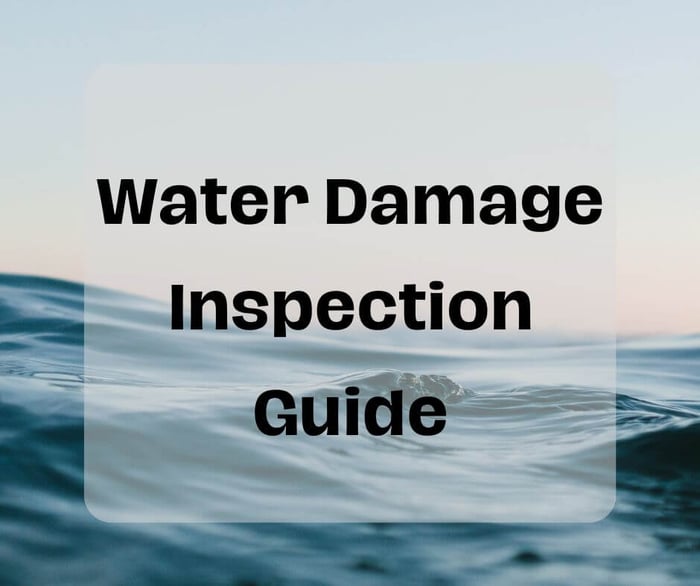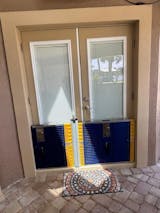Buying a new home is an exciting adventure! But make sure to look beyond the surface and check that the property is free from hidden water damage.
Wet damage can be a homeowner's nightmare, leading to costly repairs and health hazards if left unnoticed.
Here is Why Checking House for Water Damage is Important
Some would say that finding signs of damage will help you lower the price. Others claims that these nasty spots and mold stains will turn into a money pit and therefore you should run away from this place!
So, we decided to collect all the reasons why you may want to know about damage before buying the house.
- Identifying Hidden Issues: Stains and mold can often be concealed behind walls, under floors, or in areas not easily visible during a casual walkthrough. An inspection allows you to uncover any hidden issues that could lead to significant problems later on.
- Preventing Costly Repairs: Water damage can cause extensive structural damage to a property, leading to costly repairs. By identifying issues early on, you can negotiate repairs with the seller or factor the cost of repairs into your budget before purchasing the property.
- Protecting Your Investment: Buying a home is one of the most significant investments you'll make. A thorough inspection helps ensure that you're investing in a property that is structurally sound and free from significant damage, protecting your financial investment in the long term.
- Ensuring Safety: The consequences of floods can compromise the safety of a home by weakening its structure and creating conditions conducive to mold growth. By addressing water damage issues before purchasing the property, you can ensure a safe living environment for you and your family.
- Insurance Considerations: Insurance companies may be hesitant to provide coverage for a property with a history of damage or existing issues. Identifying and addressing the damage during the inspection process can help streamline the insurance application process and ensure you have adequate coverage in place.
- Peace of Mind: Knowing that the property has undergone a thorough inspection and is free from significant water damage gives you peace of mind as a homeowner. You can move into your new home with confidence, knowing that you've taken steps to protect your investment and the well-being of your family.

What does Water Damage Mean?
You made sure that the place is located in a safe neighborhood, the backyard has a potential for placing a pool and a deck, everyone has a room and the view is simply breathtaking. So what if here and there you notice some wet stains?
Here is what can happen if you neglect the damage inspection.
- Undetected Damage: Without an inspection, the buyer may miss signs of water damage that are not immediately visible during a casual walkthrough. This could include issues such as hidden leaks, mold growth, or structural damage caused by water intrusion.
- Unexpected Repair Costs: Discovering water damage after purchasing a property can lead to unexpected repair costs. Depending on the extent of the damage, repairs can be expensive and may require extensive renovations or even structural improvements to address the issue properly.
- Health Hazards: Water damage can create conditions conducive to mold growth, which can pose significant health risks to occupants, especially those with allergies or respiratory conditions. Failing to address mold issues promptly can result in health problems and may require costly remediation efforts to resolve.
- Decreased Property Value: Properties with a history of damage or existing issues may have decreased resale value. Potential buyers may be hesitant to purchase a property with a known history of damage, leading to difficulties when selling the property in the future.
- Insurance Challenges: Insurance companies may be reluctant to provide coverage for a property with a history of water damage or existing issues. This can make it challenging for the buyer to obtain homeowners insurance or may result in higher premiums.
- Legal Issues: In some cases, failing to disclose known water damage issues to the buyer can lead to legal disputes and potential liability for the seller. Buyers who discover undisclosed damage after purchasing a property may seek legal recourse against the seller for failing to disclose material defects.
Smart Vent Insulated Flood Vent

$214.99
Overview Specifications Videos Add Ons The Insulated Smart Vent Flood Vent series is an engineered, foundation flood vent designed for use in conditioned spaces where flood protection is required, but natural air ventilation is not desired. Smart Vent flood vents allow… Read More
Water Damage Inspection Checklist
To help you make an informed decision, here's a comprehensive home inspection checklist for buyers:
Exterior Inspection:
- Check the roof for missing or damaged shingles, as well as signs of water pooling.
- Inspect gutters and downspouts for clogs or damage that could cause water to overflow and seep into the home's foundation.
- Look for cracks in the foundation or exterior walls that could allow water to penetrate.
Interior Inspection:
- Test faucets, showers, and toilets for leaks.
- Inspect ceilings and walls for water stains, peeling paint, or bubbling wallpaper, which are signs of damage.
- Check for musty odors, which could indicate hidden water damage or mold growth.
- Look for warped or buckling floors, especially in areas prone to water exposure like the kitchen, bathroom, or basement.
- Inspect the basement for signs of flooding, such as water marks on the walls or standing water.
Appliances and Fixtures:
- Check around appliances such as the dishwasher, refrigerator, and washing machine for signs of water leaks.
- Inspect water heaters for rust, corrosion, or water accumulation, which could indicate a leak.
- Test the sump pump in the basement to ensure it is functioning correctly and can prevent flooding during heavy rain.
HVAC Systems:
- Inspect air conditioning units and ductwork for signs of wet damage or mold growth.
- Check for leaks or condensation around the HVAC system, especially in the attic or basement.
Basement and Crawl Space:
- Look for cracks in the basement walls or floor, which could allow water to seep in during heavy rain.
- Inspect crawl spaces for signs of moisture or standing water, which can lead to mold growth and structural damage.
Exterior Drainage:
- Evaluate the grading around the home to ensure that water flows away from the foundation.
- Check for proper drainage systems such as French drains or swales to redirect water away from the property.
Professional Inspection:
- Consider hiring a qualified home inspector or water damage specialist to conduct a thorough assessment of the property.
- Request a detailed report documenting any existing water damage or potential issues that need attention.
By following this water damage home inspection checklist, you can identify potential problems before making a purchase and avoid costly repairs down the road. Remember, prevention is key when it comes to protecting your investment and ensuring a safe and healthy living environment for you and your family.
Keeping your new house safe from floods is super important to make sure your investment stays protected and your family stays safe. Floods can wreck havoc on your home, causing expensive repairs, health issues from mold, and even forcing you out of your house. But you can totally avoid all that hassle by getting some flood barriers and other flood control solution from Dam Easy - your trusted expert in flood safety.
$949.00
DAM EASY® FLOOD GATE - DOOR DAM Floods are becoming more common around the world. What was once a 100-year phenomenon is now a seasonal trend that homeowners must deal with. That’s EXACTLY why you need this Dam Easy Flood… Read MoreFlood Barrier Door Dam - Ultimate Flood Gate

Seriously, don't wait until it's too late! Grab your flood barriers now and keep your home safe and sound from water damage.



















